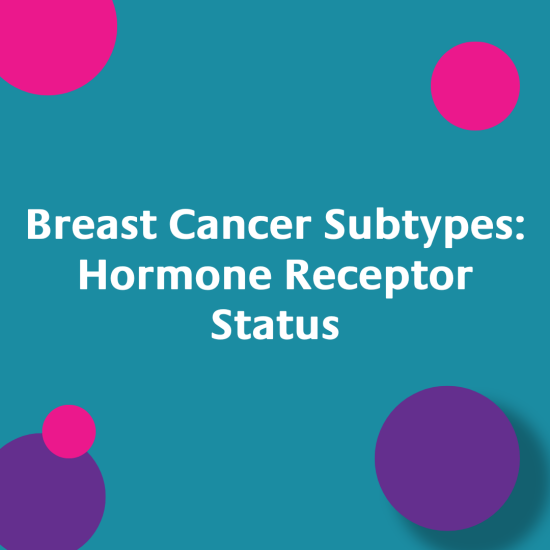A biopsy is required to determine the hormonal status of breast cancer. If breast cancer contains oestrogen receptors, it will often be called oestrogen receptor positive or ER positive breast cancer and this is often shortened to ER+. Similarly, if the breast cancer contains progesterone receptors it'll be called progesterone receptor positive, PR positive breast cancer or PR+.
If the breast cancer contains oestrogen and/or progesterone receptors it'll often be called hormone receptor positive or HR+. If the breast cancer contains very low levels or no oestrogen and/or progesterone receptors it'll be called hormone receptor negative or HR-.
Around 70-80% of newly diagnosed breast cancers are hormone receptor-positive. If the primary breast cancer spreads to another location and becomes secondary breast cancer, this same hormone receptor-positive status can be maintained (resulting in HR+ secondary breast cancer). Breast cancer that spreads can also change hormone receptor status and be different to the hormone receptor status of the primary breast cancer. A biopsy of the location that the breast cancer has spread to can help determine the hormone status of the secondary site.
Knowing the hormonal status of breast cancer is important because numerous treatments, known as hormonal therapy, can help block the effect of oestrogen or reduce the amount of oestrogen in the body and so help slow hormone receptor positive cancer growth. If the breast cancer is hormone receptor negative hormonal therapy will not be of benefit and your specialist will discuss other treatment options with you. Examples of hormonal therapy include tamoxifen and letrozole.
